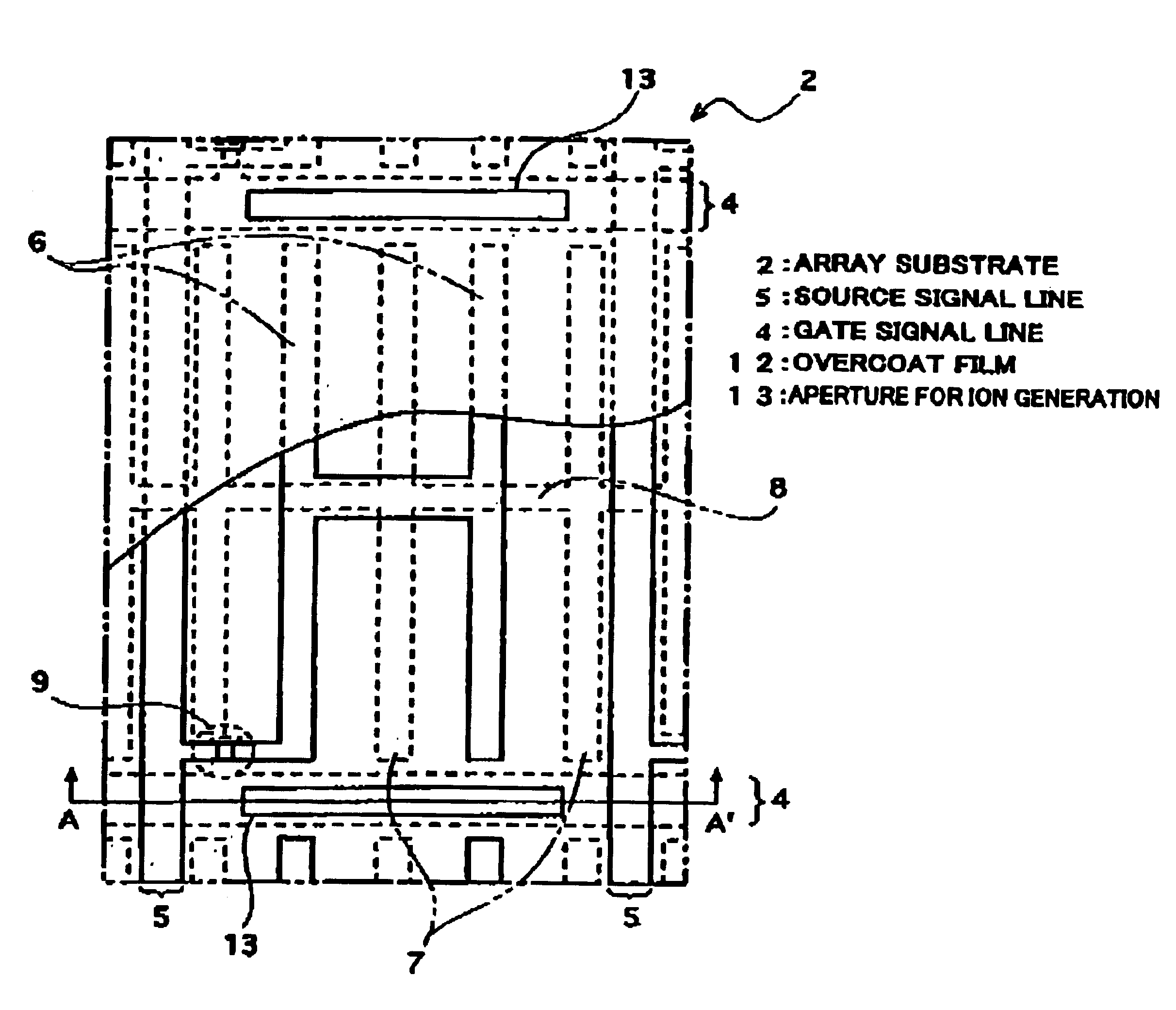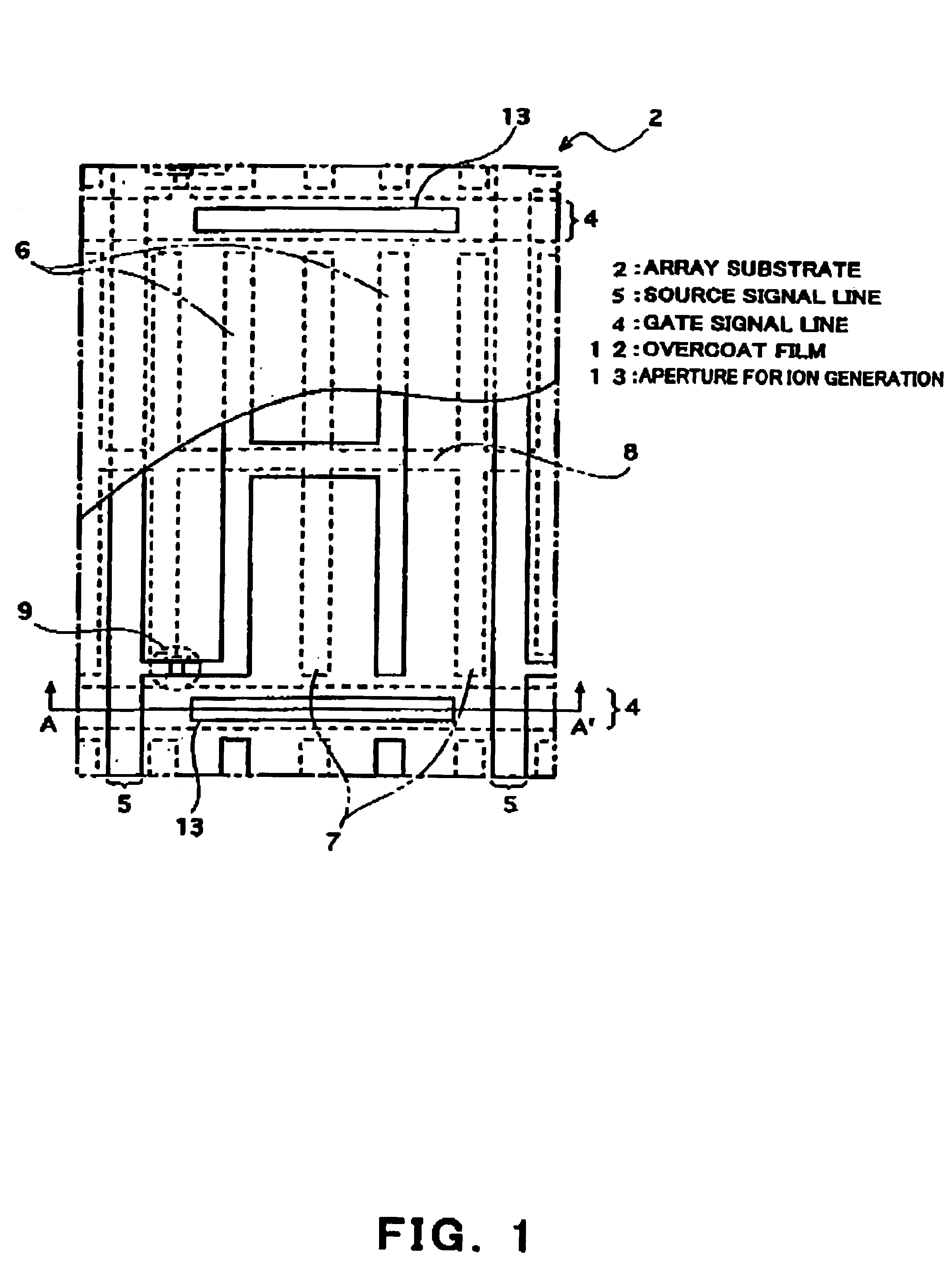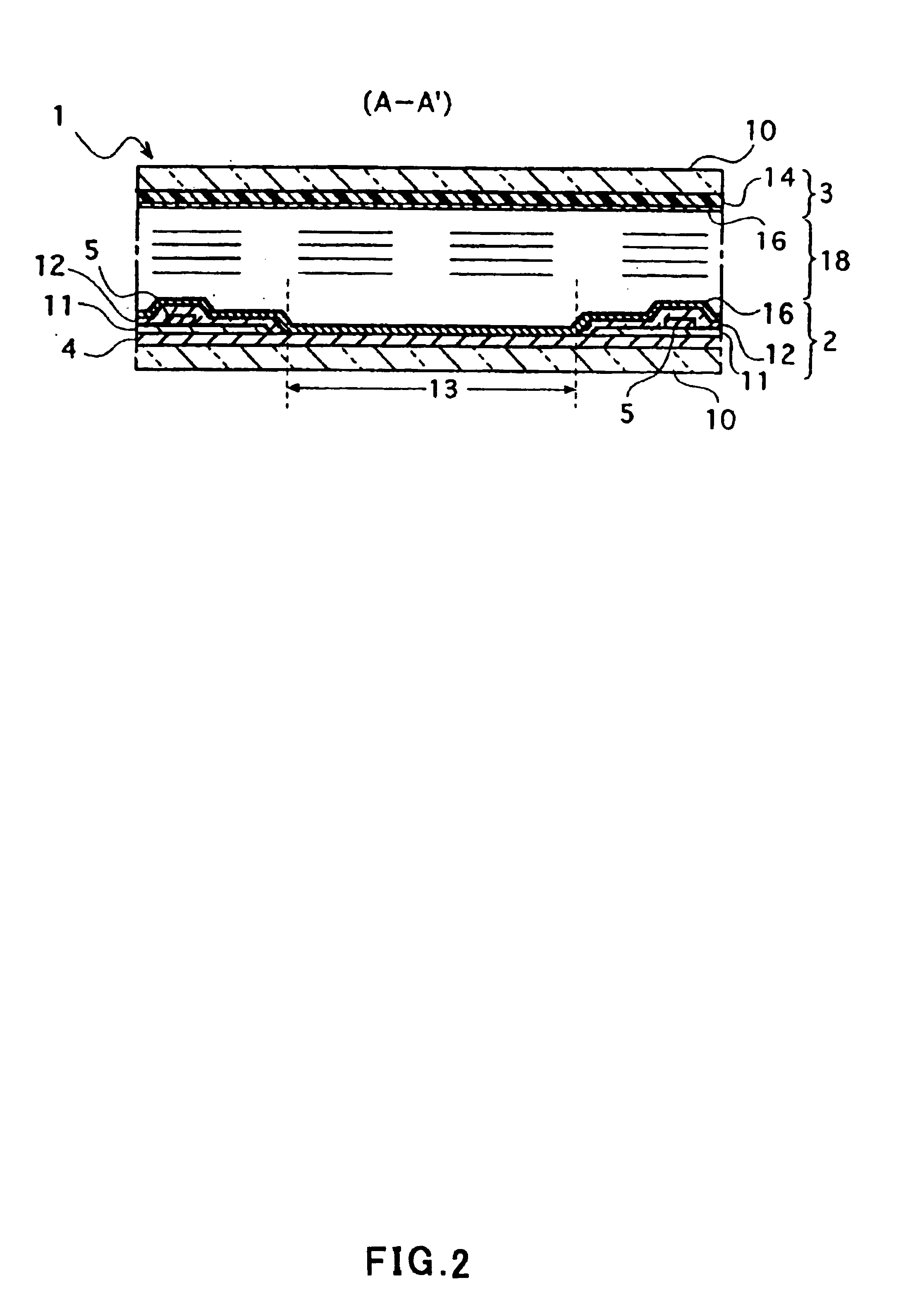Liquid crystal screen display
a liquid crystal screen and display technology, applied in the field of liquid crystal screen display, can solve the problems of ips mode liquid crystal screen display array substrates, affecting display unevenness, and unable to meet the needs of thin material processing, etc., to achieve the effect of limiting display unevenness
- Summary
- Abstract
- Description
- Claims
- Application Information
AI Technical Summary
Benefits of technology
Problems solved by technology
Method used
Image
Examples
first embodiment
[0051]FIG. 1 shows an array substrate for use in a liquid crystal screen display of the first embodiment. The liquid crystal screen display employing this array substrate is shown in FIG. 2.
[0052]The array substrate 2 has electrodes and signal lines in a similar layout to that of the array substrate of the prior art shown in FIG. 17. In a pixel region enclosed by a pair of gate signal lines 4 and a pair of source signal lines 5, pixel electrodes 6 and common electrodes 7, which are both comb-like in shape, are placed with an insulating layer 11 between. The common electrodes 7 in one pixel region are electrically connected to common electrodes 7 within the right and left adjacent pixel regions shown in FIG. 1 through a common electrode line 8 that is integrally formed with the common electrodes 7. The source signal lines 5 formed on the same layer as the pixel electrodes 6 are connected to the pixel electrodes 6 through a thin film transistor (TFT) 9. The gate signal lines 4 are for...
second embodiment
[0070]While the first embodiment has been presented in terms of gate signal lines used as a member for ion generation, the second embodiment is associated with another form.
[0071]A third electrode, which is formed in contact with the alignment layer independently of the pixel electrodes and the common electrodes, is provided for the conventional liquid crystal screen display as a conductive member for ion generation, whereby a liquid crystal screen display capable of restraining occurrence of display unevenness due to uneven ion distribution can be obtained, similarly to the first embodiment. The liquid crystal screen display according to the second embodiment comprises the array substrate 2 having a structure similar to that of the conventional liquid crystal screen display shown in FIG. 17 and the opposed substrate 3 which includes a third electrode 17 having a negative potential with respect to the electrodes 6 and 7, as shown in FIG. 5.
[0072]The third electrode 17 is in contact ...
third embodiment
[0074]If ions are continuously generated like the foregoing embodiments, the resistivity of the liquid crystal layer gradually decreases, restraining display unevenness, while there is the possibility of deterioration in display quality due to a constant decline in voltage retention during long use. Although it is possible to compensate for such changes by use of drive signals, the third embodiment will be described in terms of one example of liquid crystal screen displays capable of fundamentally preventing deterioration in display quality without compensation by use of such drive signals.
[0075]FIG. 6 shows an array substrate for use in the liquid crystal screen display of the third embodiment. FIGS. 7a and 7b show the liquid crystal screen display of the third embodiment.
[0076]The liquid crystal screen display of the third embodiment has apertures 13a for ion generation and an aperture 13b for ion retrieval. The apertures 13a are formed in parts of the gate signal lines by removin...
PUM
| Property | Measurement | Unit |
|---|---|---|
| temperature | aaaaa | aaaaa |
| side length | aaaaa | aaaaa |
| side length | aaaaa | aaaaa |
Abstract
Description
Claims
Application Information
 Login to View More
Login to View More - R&D
- Intellectual Property
- Life Sciences
- Materials
- Tech Scout
- Unparalleled Data Quality
- Higher Quality Content
- 60% Fewer Hallucinations
Browse by: Latest US Patents, China's latest patents, Technical Efficacy Thesaurus, Application Domain, Technology Topic, Popular Technical Reports.
© 2025 PatSnap. All rights reserved.Legal|Privacy policy|Modern Slavery Act Transparency Statement|Sitemap|About US| Contact US: help@patsnap.com



